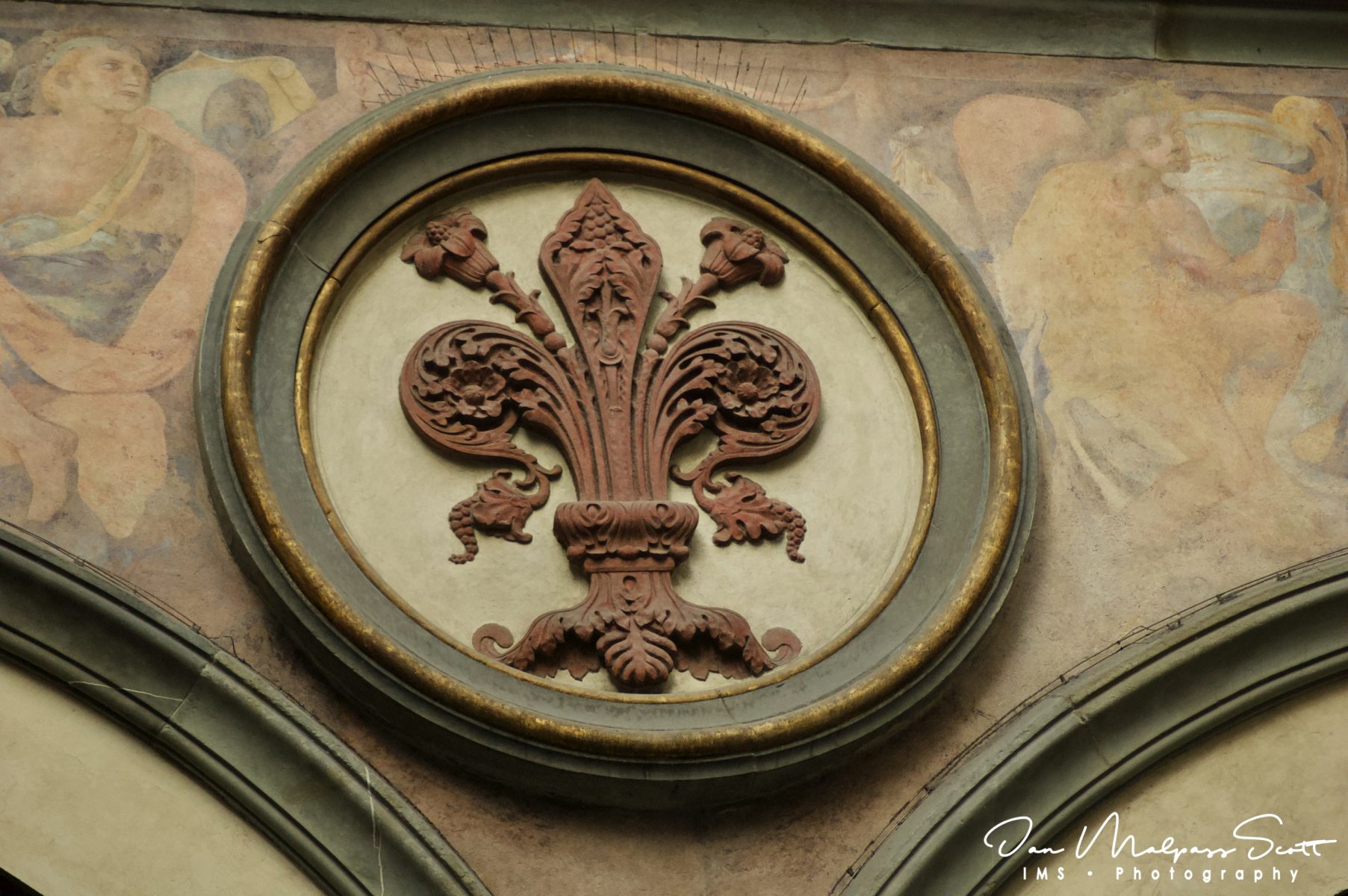![]()
Arms of the City of Florence in the First Courtyard of the Palazzo Vecchio in Florence.
The origin of the Medici coat of arms is not recorded. One unproven story traces their ancestry to a knight of Charlemagne’s, Averardo, who defeated a giant, Mugello. In reward, Charlemagne is said to have rewarded Averardo with the shield mauled by the giant, with the dents in the shape of balls, and the giant’s lands in Mugello.
Another unproven theory suggests that represented coins copied from the coat of arms of the Guild of Moneychangers (Arte del Cambio) to which the Medici belonged. That shield was red strewn with Byzantine coins (bezants). The number of balls also varied with time, as shown below. It has also been argued that these coins referenced the three coins or golden balls associated with St. Nicholas, particularly as the saint was invoked by Italian bankers as they took oaths.
As an Italian vocabulary word, “medici” means “medical doctors” and identifications with the family members as physicians may be found among their names as early as the eleventh century. Fanciful stories depict the images as pills or cupping glasses, a late-medieval medical instrument used to draw blood. Pills did not exist until much later and bloodletting was not a common practice at the time of the first Medici coat of arms. Art historian Rocky Ruggiero suggests plausibly however, that the images may represent whole ripe blood oranges that typically are grown in Italy. Although knowledge of vitamins did not exist at the time, the benefit of oranges for certain diseases was recognized and their association with recommendations by medical doctors suggests to Dr. Ruggiero that this likely is the imagery intended in the coats of arms for the Medici family.


